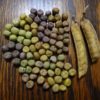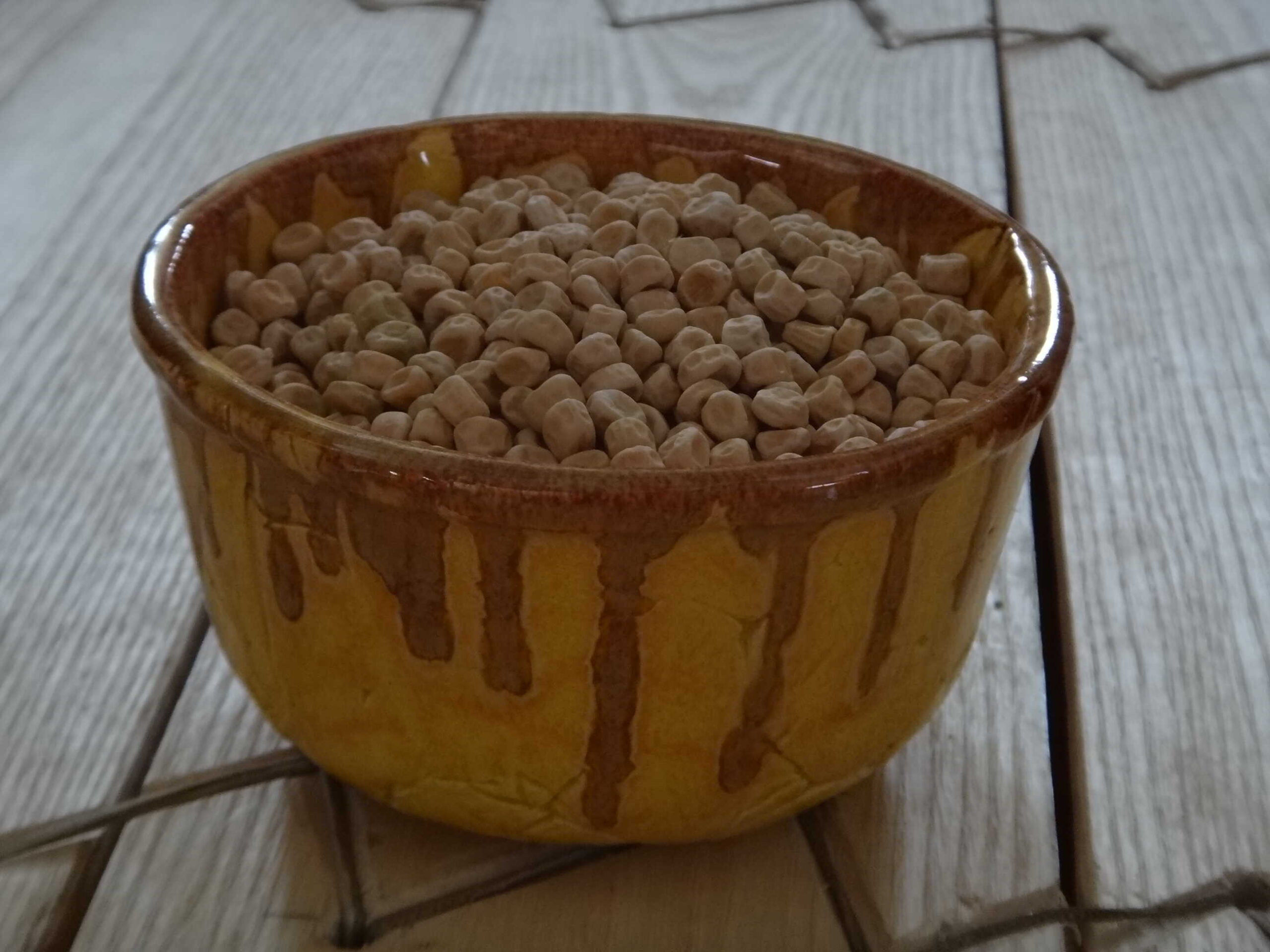Mixed Cornfield bean
$4.00
(Phaseolus vulgaris)
This “variety” is actually a mixture of a number of beans with dramatically different seed coats which have been grown together for a long time. I got it from Great Lakes Staple Seeds, but it has an interesting history before them. Apparently it was given to a Mrs. Effie Neeley (1908-2000) by her mother, Suzanne (née Wireman) Howard, after Effie married in the 1920s. Shortly afterword, she and her husband moved from Magoffin County, Kentucky, to Jackson County, Michigan, bringing the beans with them. In 1985 she gave some to her neighbour Richard Bott, a member of Seed Savers Exchange, which is how they eventually reached us. Howard’s advice to her daughter was that if she kept the beans alive, she would always be able to feed her family (advice which we heartily agree with!). However, we are a long way north of Kentucky, so this variety is very late-maturing here. While we enjoy it for its varied colours, we would only recommend it for growers in the southernmost parts of Ontario.
Incidentally, for those interested in history, Magoffin County, KY is named for former governor Beriah Magoffin, the unfortunate man who attempted to guide the state through a course of neutrality in the early years of the American Civil War.
35 seeds/packet.
In stock
Plant after last frost; soil must be warm or seed will rot. If growing on corn, wait to plant until corn is about 3” tall, or two weeks after corn is planted. Darker coloured seeds usually germinate better in cooler soil. Sow 1” deep. Space bush beans 2-4” apart and pole beans in pairs 8” apart, with 8” between pairs if climbing twine, or in groups of 3-4 around single poles 1’ apart. Pick green beans before seeds start swelling, shelly beans when seeds are full size but before pods dry, and dry beans when pods are fully dry; seed must be dry enough to not dent with a fingernail for storage. Dry beans can be further dried on a tarp, then threshed by dancing on them and winnowing away the chaff.





